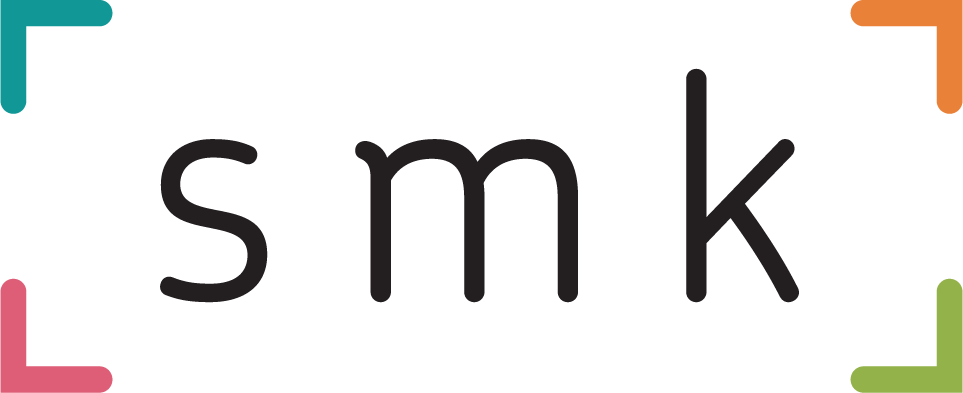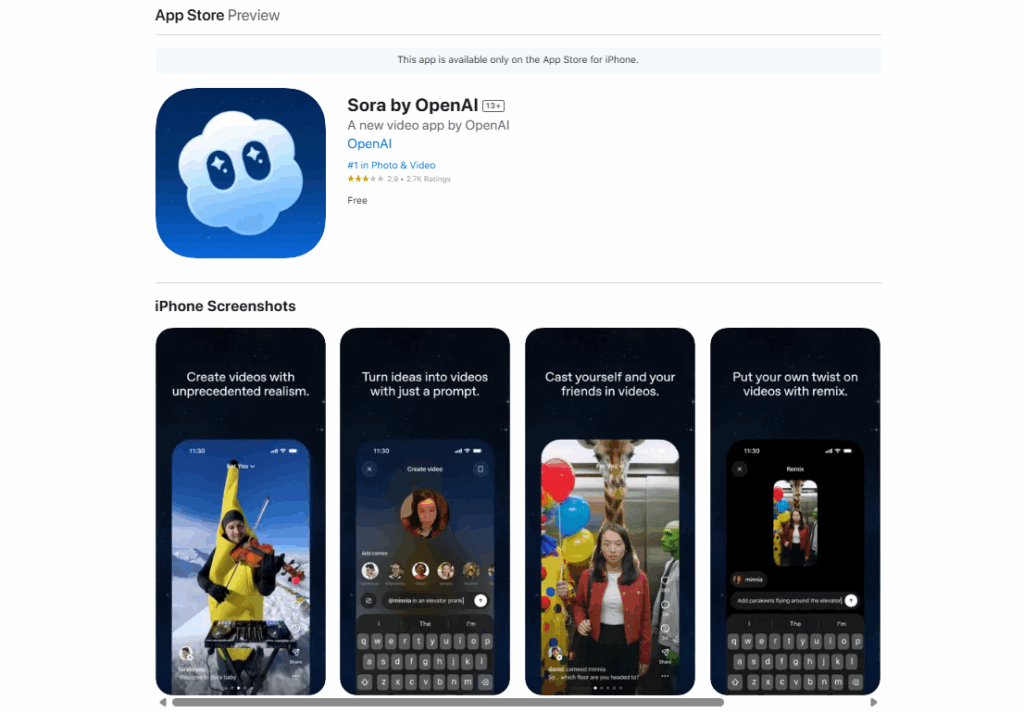OpenAI’s new AI video creation app, Sora, has rocketed past 1 million downloads in under five days, according to the project’s head, Bill Peebles. That level of early momentum is impressive on its own, but even more so considering Sora is an invite-only release and currently limited to just two markets: the US and Canada.
More notably, Sora has outpaced ChatGPT in its early growth. Despite being far more restricted in availability, Sora reached the 1 million milestone faster than OpenAI’s flagship chatbot did at launch. For marketers tracking adoption curves in AI, this is a clear signal. Consumer appetite for visual and interactive AI experiences is accelerating rapidly.
Launched on iOS on 30 September, the app is already topping the Apple App Store and generating significant industry chatter. Built on the new Sora 2 model, it allows users to scroll through a curated feed of AI-generated videos and, crucially, create their own from simple prompts. There is even a “cameos” feature that lets users insert their own likeness, or that of a friend, into AI-generated scenes. The result is a curious mix of generative creativity, meme culture and a growing share of controversy.
Generative Video Enters a New Phase
Until now, generative video technology has struggled to meet expectations. While text and image generation tools have seen explosive adoption across marketing teams, video has largely been left behind. Most marketers have used AI to support video production rather than drive it. Typical applications include scripting, storyboarding or post-production tweaks. Fully AI-generated video has remained niche, slow and creatively limited.
Sora changes that. The app brings us closer to true generative video, allowing users to go from text prompt to visual output in seconds. It may not yet be ready for polished brand campaigns, but it clearly signals a shift. AI is moving from the margins of video workflows into the content itself.
For marketers, that change is significant. What began as a novelty for developers and creative technologists is now a mass-market product. Marketers must begin preparing for a future where audiences not only engage with AI-native content but expect it.
Why Sora Matters for Marketers
For years, generative video has been the underachiever in the AI toolkit. While text and image generation raced ahead, video remained too slow, too awkward and rarely usable beyond internal planning. Most marketing teams have treated AI as a support tool for video, helping with early concepting or post-production. Sora flips that dynamic.
Now, a consumer-facing app can generate entire videos in seconds using only a prompt. That shift introduces several strategic implications for marketing teams.
First, it radically shortens the gap between idea and execution. With Sora, creative teams can move from concept to rough cut almost instantly. Moodboards, production schedules and waiting for assets are no longer prerequisites. For campaign testing, social content or pitch visuals, that kind of speed transforms workflows.
Second, it lowers the barrier to entry. Video has always been one of the most resource-intensive content formats. Sora gives small teams access to generative tools that, until recently, would have required external agencies or in-house editors. Quality will continue to improve, but the access is already game-changing.
Third, it introduces a new visual language. Sora’s early content is surreal, meme-heavy and intentionally chaotic. It does not follow traditional rules of production or storytelling. While it is not ready to replace brand videos, it provides early insight into how audiences might engage with AI-native formats and how brands will need to adapt.
Finally, the “cameo” feature points to new forms of brand presence. Virtual ambassadors, branded avatars and AI-enhanced spokespeople are no longer far-off concepts. Sora provides a low-risk environment to begin testing these ideas, especially for brands targeting younger or creator-driven audiences.
Marketers should not wait for perfection. As with TikTok’s rise, the value often lies in creative imperfection. Brands that are willing to experiment early, learn quickly and embrace the evolving aesthetics of AI video are likely to gain an edge.
Early Content Trends and Creative Control
As expected, the content feed inside Sora is a mix of the surreal and the strange. Users are posting uncanny dream sequences, meme-driven animations and AI-generated shorts that would never make it through traditional brand approval processes. OpenAI staff have leaned into the format too, uploading deepfaked videos of themselves to showcase the app’s capabilities.
That rapid adoption has already raised moderation challenges. Copyrighted characters have appeared in unauthorised or brand-unsafe contexts, prompting OpenAI to introduce new guardrails. IP holders now have more control over how their content is represented, and users can specify how their own likeness is used.
“Team working hard to keep up with surging growth,” Peebles said. “More features and fixes to overmoderation on the way.”
It is an early reminder that brand experimentation on emerging AI platforms must be monitored closely. Brand safety, creative control and ethical use of likenesses remain critical concerns.
A Strategic Shift for OpenAI
Sora is more than a social experiment. It marks a broader strategic shift for OpenAI, from infrastructure provider to direct-to-consumer product maker. Rather than relying on third parties to build apps on its models, OpenAI is doing it itself and at scale.
By embedding the Sora 2 model into a consumer app, OpenAI gains something critical: user engagement. That engagement helps refine the model, test UI patterns and build brand loyalty. For marketers watching the generative AI space, this is a clear signal. The consumerisation of AI is accelerating, and it will be visual-first.
Limited Availability, Unlimited Potential
Sora is currently only available in the US and Canada, and only on iOS. Even so, it has surged to the top of the App Store. Global marketers cannot test it directly just yet, but that should not delay strategic thinking. The platform is evolving rapidly, and the creative playbook is being written in real time. Early adopters will gain valuable insight and cultural relevance by engaging early.




RECOMMENDED FOR YOU
Meta Adds New AI Tools To Supercharge Lead Gen
Meta is rolling out a wave of updates to…
Meta is rolling out a wave of updates to…
Meta Announces Business AIs For Brand Websites
Meta is moving further into the AI assistant space…
Meta is moving further into the AI assistant space…
ChatGPT Data Reveals New Search Behaviour
ChatGPT is not just answering questions; it is searching…
ChatGPT is not just answering questions; it is searching…